Running a university isn’t a breeze. Managing courses, admissions, and student interactions – it’s a constant juggle. University management requires coordination, efficiency, and teamwork.
In this guide, I’ll be looking at best management systems that’ll change the way you run your university campus for the better. These tools lighten your load and let you focus on what truly matters: providing quality education and shaping the minds of the future.
![]()
6 Best Management Systems for Universities
The definitive list:

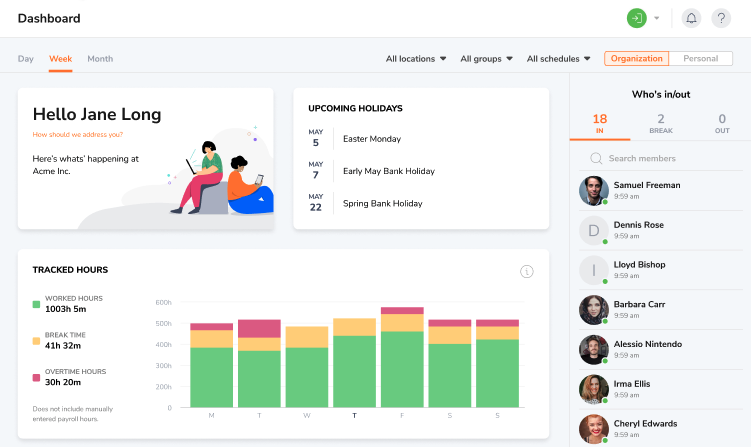
- Online kiosk
- Integration capabilities
- Mobile app convenience
- Task and project tracking
- Multiple device compatibility
- Detailed analytics and feedback
- Location and time-based reminders
- Clock-in/clock-out with facial recognition
- Easy to use
- Automated reports
- Mobile app convenience
- Facial recognition for accurate attendance tracking
- Seamless integration with Slack and other platforms
- You tell us! We’d love to hear how we can improve
At the forefront of our list is Jibble – an attendance management system that seamlessly integrates into the university environment.
Featuring an intuitive interface, Jibble empowers professors and staff to effortlessly monitor attendance and working hours, streamlining the intricate realm of time management. Noteworthy here is the versatility offered by Jibble’s attendance kiosk, a setup that fosters convenience and ease. Moreover, the inclusion of a comprehensive mobile app extends the accessibility of this system, making attendance tracking an on-the-go endeavor.
Jibble isn’t just about tracking attendance; it’s also about enabling a transformative shift. Its real-time capabilities ensure the meticulous collection of data, underpinning transparency and fostering efficient communication between faculty members and administrators. This robust system caters to both student attendance and educators’ needs, effectively generating timesheets for payroll and facilitating overtime calculations.
Now, you don’t have to take my word for it. The reviews speak for themselves! When you look across trusted platforms such as Google Play Store, Capterra, and GetApp, Jibble is the highest-rated university management and attendance system out there.

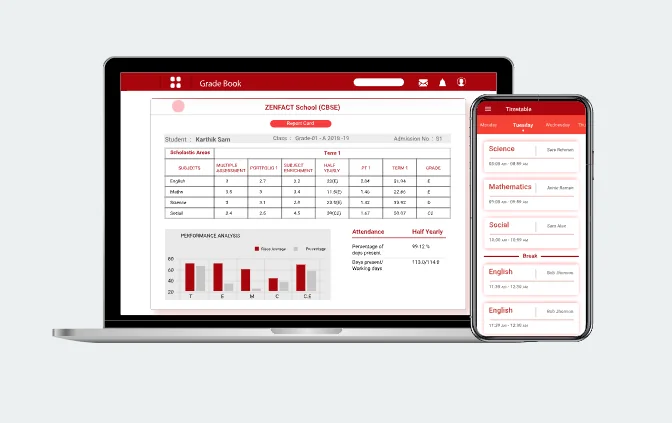
- Mobile accessibility
- Multilingual support
- Secure cloud storage
- Parent communication
- Customizable dashboards
- Integration with student profiles
- Automated reports and analytics
- Real-time tracking and notifications
- Customizable attendance recording
- Behavior analysis and engagement metrics
- Multilingual support feature
- The availability of a mobile app
- Customizable attendance recording feature
- Behavior analysis and engagement metrics
- Automated reporting and analytics features
- Real-time attendance tracking and automatic notifications
- Integration of attendance data with student profiles helpful
- Delays in receiving assistance for their queries or technical issues
- Difficulties in setting up these integrations with other platforms used in their universities
- Fedena’s interface and features have a learning curve, especially when setting up and customizing attendance rules
- Occasional technical issues that can disrupt the smooth flow of attendance management and cause frustration
Fedena stands as a comprehensive management system that goes beyond traditional functions. Alongside attendance tracking, it offers features for grade management, communication, and more. Fedena’s unified platform centralizes administrative tasks, fostering efficient collaboration among staff and professors for a well-rounded university experience.
Fedena’s user interface receives praise for its clarity and accessibility. Professors find navigation intuitive, allowing them to manage attendance and grades effortlessly. The system’s communication tools enhance interaction between faculty and students, contributing to a connected learning environment. I just can’t get over how well Fedena streamlines multiple tasks within a single platform.


- Safe and secure
- Collaborative tools
- Mobile accessibility
- Community support
- Course management
- Open-source flexibility
- Grading and analytics
- Multimedia integration
- Customizable dashboards
- Assessment and feedback
- Plagiarism testing
- Fun, colorful, and very engaging UI
- Offers incredibly detailed configuration options
- Ability to choose what you want to appear on your dashboard
- Allows universities to have a centralized repository of information for their course
- Gradebook is hard to use
- Difficulty in locating classes within the system
- Codebase is so hard to understand especially for non-Moodle Developers
- Strictly course-based, making it hard to integrate and synchronize a platform already built and used by universities
Moodle is a game-changer in the realm of e-learning for universities. Professors can create interactive courses, upload resources, and engage students in discussions. Moodle’s open-source nature allows for customization and integration of various learning materials, making it a powerful tool for educators in the digital age.
I find Moodle’s user experience to be truly notable due to its adaptability and engaging interactivity. Professors appreciate the flexibility to design engaging courses that suit their teaching style. Students find the platform inviting and conducive to self-paced learning. The seamless navigation and interactive features contribute to a dynamic learning environment that fosters engagement.

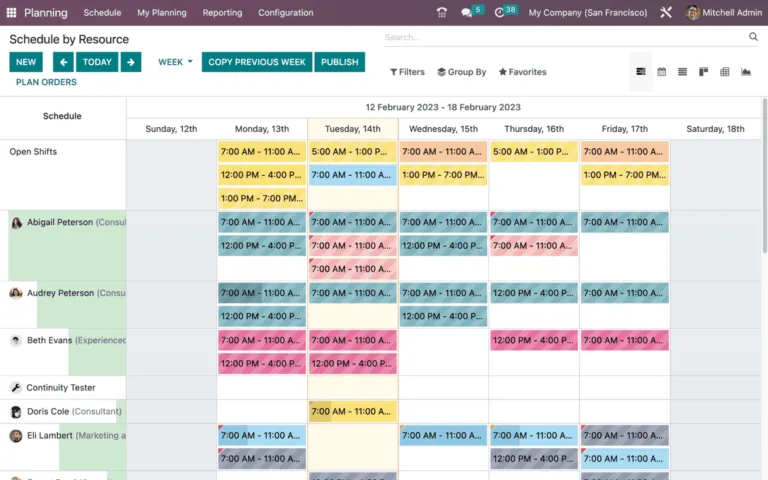
- Scalability
- Customization
- Unified database
- Modular approach
- E-learning integration
- Finance and accounting
- Open-source community
- Human resources management
- Communication and collaboration
- Student Information System (SIS)
- Opensource
- Easy to install
- Great usability
- Good for SMEs
- All the apps are natively integrated
- Module functionalities are available
- Sufficient features to track and control finance
- Hard to develop reports
- Many errors in ‘Multi Company’
- Lack of technical and functional documentation
- Project management for the software implementation is catastrophic and completely dependent on the consultant you are assigned to
Odoo transcends beyond academic management, offering a comprehensive suite of modules for HR, finance, project management, and more. Its modular approach ensures that various departments can collaborate effectively, improving university-wide efficiency and communication.

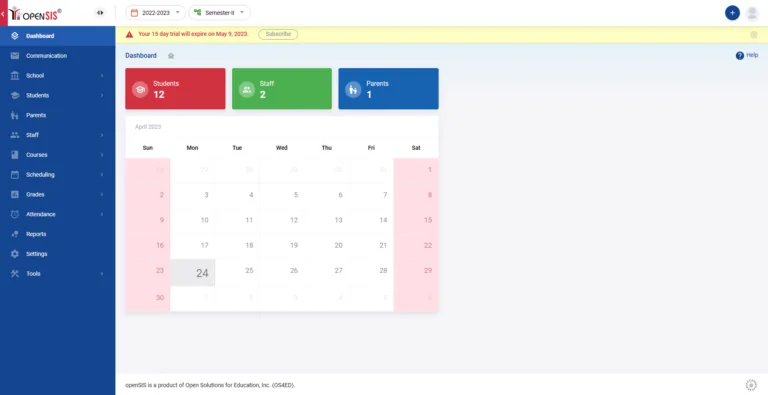
- Customization
- Course scheduling
- Security and privacy
- Support and updates
- Attendance management
- Gradebook and reporting
- Parent and student portals
- Admissions and enrollment
- Academic progress tracking
- Student information management
- Open source
- Easy to modify
- Record creation
- User management
- Easy user-interface
- Easy to manage and learn
- Faculty profile and access
- Student profiles and access
- Limited support
- Doesn’t include application management
- Limited resources familiar with the system
- Doesn’t have built-in rules and configurations
OpenSIS adopts a student-centric approach, focusing on enhancing the overall student experience. From simplifying admission processes to facilitating course scheduling, OpenSIS streamlines administrative tasks, enabling professors to focus on personalized student support and engagement.

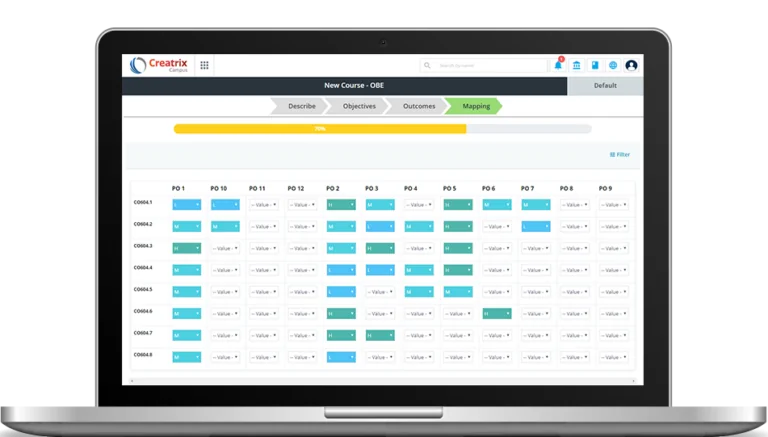
- Customization
- Mobile accessibility
- Library management
- Course management
- Communication tools
- Financial management
- Analytics and reporting
- Admissions and enrollment
- Examination and assessment
- Student Information System (SIS)
- Excellent integration and flexibility
- Good faculty management solution
- Has ‘Continuing Education’ and ‘Degree Program’ in one system
- Ability to help generate ‘Self Evaluation Reports’ for accreditation purposes
- Searching for a name is difficult
- Downloading a master file and extraction takes time up to three hours
- Adding questions manually in the question bank. An import of Excel can be added
- Problems with financial aid calculations that are occasionally incorrect and interfere with the invoice presentation
Creatix Campus transforms university management with its modular approach. Covering everything from admissions to alumni management, it offers an all-encompassing solution for streamlined administration and enhanced campus experiences.
The modular structure allows administrators to navigate different areas with ease. Students benefit from a more connected experience, with modules that enhance every phase of their university journey. And the cohesive user experience fosters collaboration and efficiency across the campus.
How to Choose the Best Management Systems for Universities?
Selecting the ideal management system for your university requires careful consideration. To help you make an informed choice, here are the key factors to consider:
- Assess Your University’s Needs: Begin by identifying your university’s specific requirements. Determine which administrative tasks need streamlining and what features will enhance academic engagement. A clear understanding of your institution’s needs will guide your selection.
- Prioritize User-Friendliness and Scalability: Opt for a system that offers a user-friendly interface for both administrators and students. It should be easy to navigate and require minimal training. Additionally, consider scalability; choose a system that can grow with your university’s evolving needs.
- Seek Robust Customer Support: A reliable management system should come with strong customer support. Whether you encounter technical issues or have questions about functionality, responsive support can save time and frustration.
- Engage with User Communities: Look for systems with active user communities or forums. These platforms provide valuable insights into the user experience and potential challenges. Engaging with other users can help you gauge the system’s effectiveness and its fit for your university.
- Ensure Compatibility and Integration: A management system should seamlessly integrate with your existing infrastructure. Compatibility with other tools and software used by your university is crucial to ensure a cohesive ecosystem. This integration enhances efficiency across various departments.
- Envision the Impact: Consider the broader implications of your choice. How will the chosen system affect the daily lives of administrators, faculty, and students? Envision the improvements it will bring to processes, communication, and overall university management.
By carefully evaluating these factors, you can navigate the complex landscape of management systems and select the one that best aligns with your university’s unique needs and goals. Making an informed decision ensures that the chosen system becomes a valuable asset in enhancing administrative efficiency and fostering an enriched academic environment.
Final Thoughts
As universities continue to embrace technology’s transformative power, these management systems emerge as invaluable companions on the journey to excellence. From fostering communication to optimizing processes, Jibble, Fedena, Moodle, Odoo, OpenSIS, and Creatix Campus collectively shape the future of university management, ensuring that administrators, educators, and students can flourish in this digital era.
With these management systems by your side, you’re equipped to pave the way for a future of efficient, engaging, and successful educational journeys.


